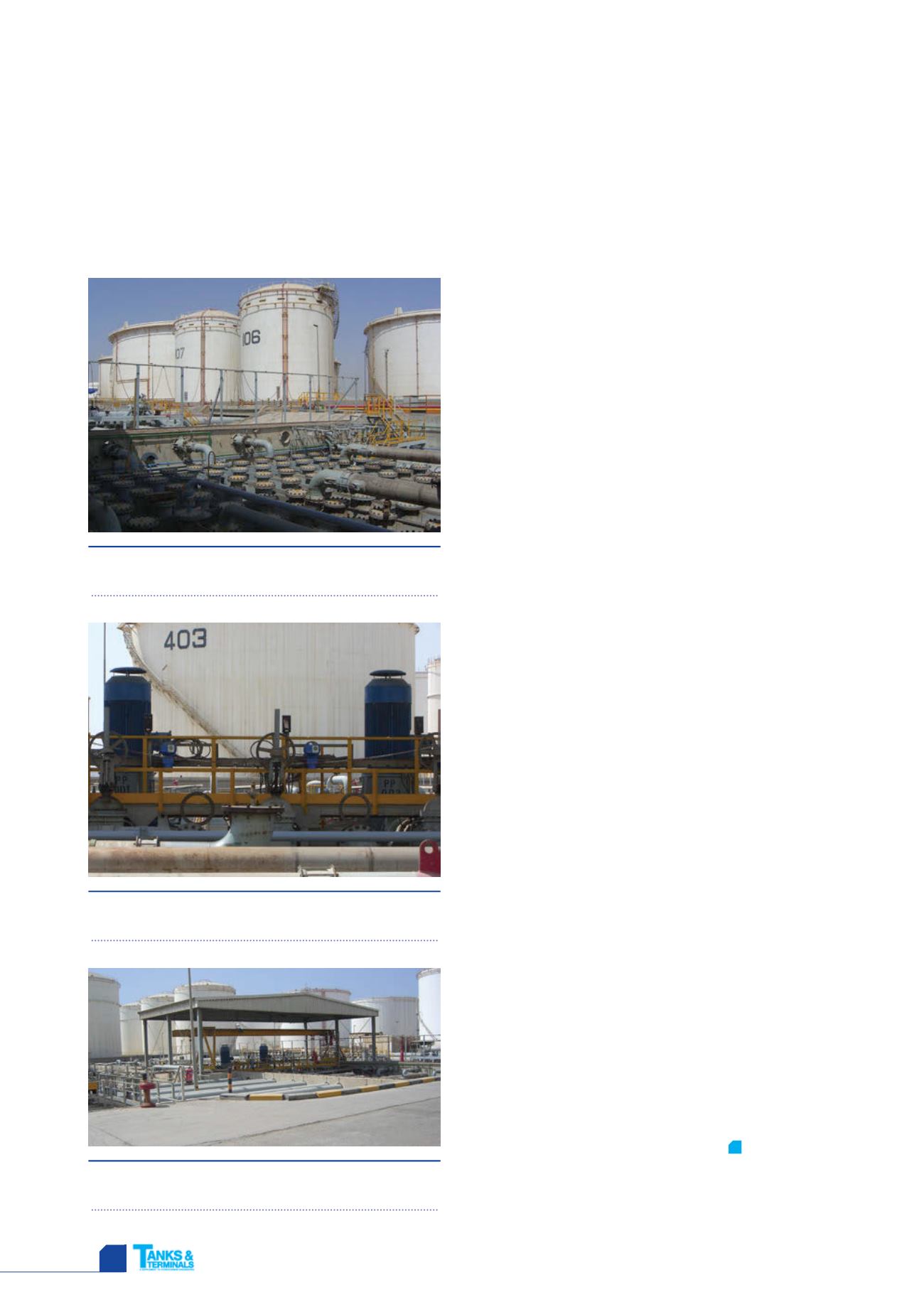
HYDROCARBON
ENGINEERING
42
is constant and at a high frequency. The ability to remotely
operate valves improves operational efficiencies, thus reducing
operation cost. The following section will discuss marrying
valves and actuators, the applications, criteria for actuator
selection and the benefits and drawbacks to valve automation
in a tank and terminal setting.
There are many valve applications in a tank or terminal, and
each application will require different requirements that
determine the valve technology type. For the purpose of this
article, valve technologies where an electric actuator can be
utilised will be focused on.
Gate valves
Slab gate valves are typically utilised as pipeline tie-in valves,
where large bore through conduit valves are required. A
mechanical sealing split wedge gate valve or compact gate
valves can also be found in the manifold system. Compact gate
valves more so are selected where large bore space constraints
are present. Actuators are almost certain to be fitted to all gate
valve types due to the large number of required valve turns to
open and close the valve. The high turn requirement, coupled
with the normal location of gate valves within the facility, make
the decision to fit gate valves with an electric actuator an easy
one. Operators can take on deliveries or send product from
mainline pipeline connections remotely.
Double block and bleed plug valves
Double block and bleed (DBB) plug valves will be in the main
manifolds, where verifiable positive isolation is a must to
prevent product contamination. DBB plug valves can also be
found in fiscal metering systems, such as a bi-direction meter
proving station. The workhorse of any multi-product tank farm
is the manifold system and the DBB plug valves within the
manifold. These are the highest duty valves and always the most
abundant in a tank farm, so it is logical that these valves be
actuated. By utilising actuators for these valves, terminal
operators can map programmes prior to opening and closing
valves as needed to ensure accurate product movement. The
ability to be operationally efficient is a great benefit; however,
there is a drawback to operating DBB plug valves remotely. The
purpose of a verifiable positive isolation DBB plug valve is lost
as local visual verification is needed. Of course this deficiency is
avoided when the actuators are tripped locally at the valve.
Four way diverter valve
A four way diverter valve will only be found in a bi-directional
meter station where operational speed and valve seal
repeatability is a major concern. The high speed requirement
for valve operation for a four way valve makes the use of an
electric actuator a must. Equally important is the actuator
selection for this high duty use application.
Considerations
As operating valves in a tank farm environment with electric
actuators is becoming more and more common, there are a
few issues to consider. In reference to the valve types listed
earlier (gate, DBB plug and four way diverter valves), the
obturator requires a multi-turn operation to open and close
the valve. With these valve types, the electric actuator must
be a multi-turn rotary actuator. This will require specific sizing
of the actuator to meet the valve torque requirements, as
well as the end user operating times.
Conclusion
With all the challenges present in the tank and terminal
environment, electric actuation is an automated solution that
can simplify an operator’s job. Precision, efficiency and
production are all improved by allowing an electric control
system to monitor and control operations.
T&T
Reference
1. 'Standard for Rapid Rise Fire Tests of Protection Materials for
Structural Steel', Ed. 4, 3 August 2011.
Figure 3.
Manifold on the Star Energy oil tanking
terminal, Dubai.
Figure 4.
Pump plate at the Star Energy oil tanking
terminal, Dubai.
Figure 5.
Tank farm storage at the Star Energy oil
tanking terminal.


